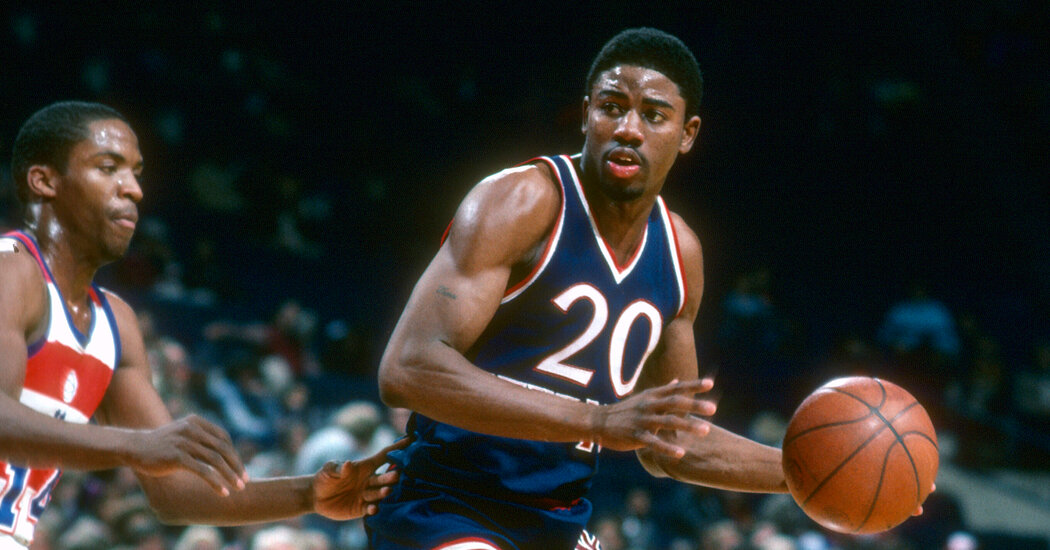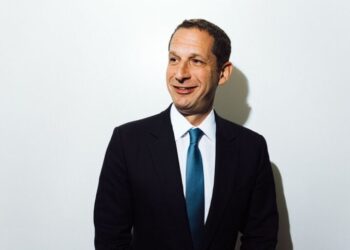
Michael Ray Richardson, a four-time All-Star guard whose ferocious defense and slashing drives with the New York Knicks awed even N.B.A. greats, but who later became the league’s first player to be banned for drug use, died on Tuesday in Lawton, Okla. He was 70.
He was recently diagnosed with prostate cancer, his friend and lawyer John Zelbst said in a statement confirming the death.
Despite his brilliance, Richardson — who at times preferred an alternate spelling, Micheal, and was nicknamed Sugar — was remembered as much for his ouster from the league in 1986 over cocaine as for his achievements on the hardwood. His memoir, “Banned: How I Squandered an All-Star NBA Career Before Finding My Redemption,” was published last year.
“He had it all as a player, with no weaknesses,” Isiah Thomas, the Hall of Fame guard for the Detroit Pistons, said of Richardson, in an interview with the sports and culture site Andscape in June.
In a 2020 interview with the sports columnist Mike Vaccaro of The New York Post, Magic Johnson, the Los Angeles Lakers superstar, said: “When I was playing, the one player I enjoyed watching more than anyone else was Sugar Ray Richardson. When I saw him, I saw a smaller version of me.”
Richardson, a 6-foot-5 product of the University of Montana, was drafted fourth overall by the Knicks in 1978, two slots ahead of Larry Bird, who went on to a Hall of Fame career of his own with the Boston Celtics. New York fans and media quickly labeled Richardson “the next Walt Frazier,” a reference to the stellar Knicks point guard known as Clyde, who helped pilot the franchise to two league championships in the early 1970s.
The Knicks never took home a crown during Richardson’s four-year tenure in New York, but he still made his mark, earning an All-Star nod in three consecutive seasons with the team, from 1980 to 1982.
Although he played in a high-flying era, Richardson was known for his lockdown defense. He earned first team All-Defensive honors twice and, in his second season, 1979-80, he became just the third player in league history at the time to lead the N.B.A. in both steals (averaging 3.2 per game) and assists (10.1). Over an eight-season career, he averaged 14.8 points, 7 assists and 2.6 steals per game.
The Knicks made the playoffs in Richardson’s third season, 1980-81, under Coach Red Holzman, although they lost to the Chicago Bulls in the first round. The next year, the Knicks got off to a rough start and, after a particularly dispiriting game in December, Richardson spun off one of the most quoted remarks in league history:
“What do you think is happening to this team?” one reporter asked him.
“The ship be sinking,” Richardson replied.
“How far can it sink?” another reporter asked.
“The sky’s the limit,” Richardson responded.
Things got worse. Coach Hubie Brown, a future Hall of Fame inductee, took over the reins in 1982, and he and the star guard clashed repeatedly. “Did he give me a chance?” Richardson wrote in his memoir. “No. But at the time, I wasn’t giving myself a chance, either.”
As a young star athlete in a particularly hedonistic era in New York, he began mingling with celebrities at the disco club Studio 54. Drugs were everywhere. “The very first time I tried cocaine, it didn’t even get me high,” he wrote. Then he tried it again. And again.
Eventually, he wrote, “I was no longer the next Walt Frazier. I was becoming the next famous burnout.”
Richardson was born on April 11, 1955, in Lubbock, Texas, the third of seven children of Billy Jack and Luddie (Hicks) Richardson. Lubbock “was a horrible place to live if you were Black,” he wrote. His father was in the military and rarely around, and his mother eventually moved the family to Denver to find a better life.
Shy and awkward as a youth, Richardson began to find an identity on the basketball court. In his junior year at Manual High School, his varsity squad won the state championship. He was recruited by the University of Montana, where he recalled being the only Black player on the team and one of the few Black students on campus.
He settled in to become a star for the team. In his senior season, 1977-78, he averaged 24.2 points and 6.9 rebounds a game, as Montana won the Big Sky Conference regular-season title, landing him squarely in the sights of the Knicks, with which things went well — until they didn’t.
In October 1982, New York traded Richardson to the Golden State Warriors in a deal for Bernard King, who overcame substance abuse issues of his own to become a hallowed star at Madison Square Garden.
In his time with the Warriors, 1982-83, Richardson suffered multiple ankle injuries and, he wrote, “I hit one of the worst stretches of my life.” As cocaine came to dominate his hours away from the arena, he added, “I told myself I was just passing the time, but I was losing control.”
He was hardly alone. The Washington Post reported in 1980 that an estimated 40 to 75 percent of players in the National Basketball Association used the drug.
“During warm-ups,” Richardson told The Guardian, “guys on different teams would say, ‘Yo, man, I got what you’re looking for, let’s get together,’” when the game was over.
The N.B.A. instituted a three-strikes policy for drug offenses in 1983.
After 33 games with the Warriors, Richardson was traded by Golden State to the New Jersey (now Brooklyn) Nets. He then reduced his drug intake enough to lead the team to a shocking victory over the defending champion, Philadelphia Sixers, in the first round of the 1984 playoffs, before losing to the Milwaukee Bucks in the second. Richardson won Comeback Player of the Year honors in 1985 after averaging 20.1 points and leading the league in steals.
Despite having made multiple trips to rehab over the years, things unraveled again for Richardson in December of the following season, when he failed to show up for a game after a team Christmas party. In February 1986, Commissioner David Stern announced that Richardson would be barred from the league for committing his third violation of the substance abuse policy, with the option to appeal after two years.
Richardson was reinstated in 1988, after Stern declared him drug-free. But having recently played in the Continental Basketball Association, Richardson instead headed to Europe, where he starred in Italy and France before retiring at 46 in 2002.
Richardson spent the last decades of his life clean, and often spoke at schools and other forums, while coaching in the C.B.A. and in Europe, about the dangers of drugs.
Information on his survivors was not immediately available.
In his interview with Andscape this year, Richardson looked back on the habit that took so long to shake. “Once you start doing it,” cocaine “just takes over, and you don’t think you have a problem.”
But many around him understood, even long ago. As his Nets teammate Buck Williams told Sports Illustrated in 1986, “He’s got a handicap every bit as obvious as a man in a wheelchair.”
Alex Williams is a Times reporter on the Obituaries desk.
The post Michael Ray Richardson, N.B.A. Star Derailed by Cocaine, Dies at 70 appeared first on New York Times.



